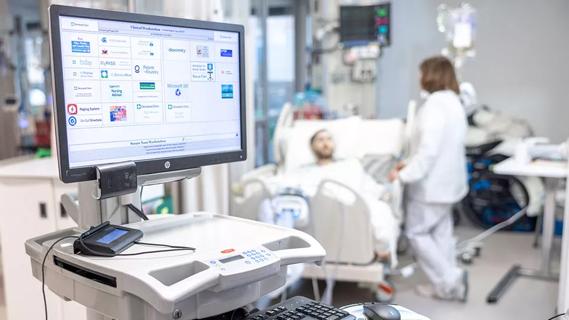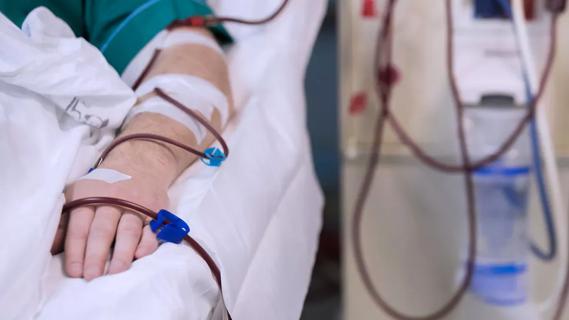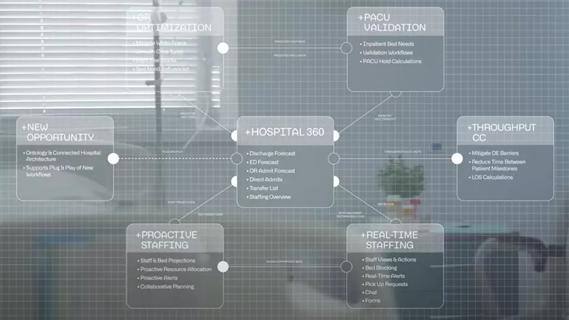Revised process helps prevent errors, streamline documentation

By the time they turn 18 years old, most pediatric patients have received dozens of immunizations to protect them from diseases ranging from diphtheria, tetanus and pertussis to human papilloma virus. In an effort to promote safety and improve the confidence of nurses responsible for dispensing these agents, Cleveland Clinic’s Regional Operations team has introduced an updated vaccination administration process.
Advertisement
Cleveland Clinic is a non-profit academic medical center. Advertising on our site helps support our mission. We do not endorse non-Cleveland Clinic products or services. Policy
Although the new protocol was designed to benefit all patients and caregivers in the health system’s 20 ambulatory care facilities, it has proven to be particularly helpful for pediatric providers, who may provide hundreds of vaccines each week, explains Sara Stroh, RN, clinical nurse and team lead in pediatrics at Cleveland Clinic Twinsburg Family Health and Surgery Center.
Pediatric nurses at Twinsburg initially developed the process as part of a continuous improvement project. Recognizing an opportunity to refine the center’s vaccination protocol, Jared Leal, MSN, RN, CNML, nurse manager, conducted a continuous improvement huddle with the site’s nursing team. After discussing the current immunization process, the team set out to create a safer, more-streamlined workflow.
Under the new guidelines, one nurse prepares the vaccination, which is then checked by another caregiver on the computer and confirmed as “pending” in the electronic health record, before the first nurse enters the exam room to administer the dose. “These steps give the computer an opportunity to confirm the dose based on the order and verify that the vaccine has not expired,” explains Leal.
In the exam room, the nurse scans the vaccine before it is administered, while using the electronic health record as an additional check to ensure the correct medication is being given.
The process, says Stroh, supports the wellbeing of patients and caregivers alike. “It obviously protects patients by safeguarding against errors, but it also enables a faster, easier documentation process,” she explains. “When you are done with the patient, you simply document your location and the time the vaccine was administered, and you tap your badge. We’ve managed to eliminate a lot of the ‘back work’ that was previously required.”
Advertisement
After implementing the revised vaccine administration process at Twinsburg, Leal approached the Regional Operations Medication Safety Committee with the hope that other Cleveland Clinic locations might adopt it. The committee agreed to pilot the protocol at three other family health centers, where nurse managers were tasked with educating caregivers on the revised process for vaccine error prevention.
Based on the pilot’s success, the committee opted to roll out the vaccination process at all ambulatory locations, and Leal spearheaded the creation of two educational videos to standardize training. “One of the best ways for people to learn is to show a process in action, so we made sure the video presented the practice change from start to finish,” explains Leal.
The second video provides examples of common vaccination errors and how the revised process can be used to prevent them.
The Medication Safety Committee shared the videos and results from the pilot sites to nursing leaders throughout Regional Operations, who then educated their caregivers on the revised process. By the end of September 2021, the new protocol had been fully implemented at all Cleveland Clinic ambulatory care locations.
Advertisement
Advertisement

Nurses play key role in comprehensive lifetime treatment program

Customized bots improve speed, efficiency by streamlining daily clinical, clerical tasks

Nurses play pivotal role in patients’ ability to recover in the comfort of their own homes

New protocol reduces costs, increases patient and caregiver satisfaction

Advocating for patient safety is imperative in fast-paced surgical settings

M-Power program improves the perinatal experience for people who have survived abuse

Veteran nurse shares his experience as a caregiver and community volunteer

Cleveland Clinic partners with Palantir to create logistical command center